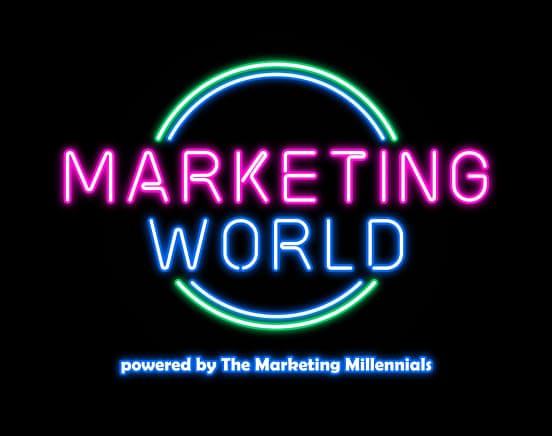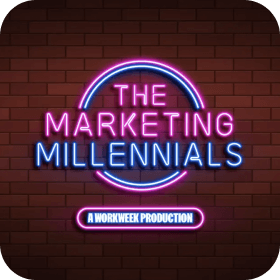I am so STOKED for you to get to know Jeromy Sonne.
Jeremy is a marketing swiss-army knife, who got into marketing by accident (What a legend).
He ran a startup with his college buddies and immediately was hooked on the power of Facebook ads.
After graduating, Jeremy dipped his toes in all types of experiences, working with agencies and at FinTech companies.
But audio advertising, performance marketing, and growth marketing took his heart.
Go grab your morning tea and enjoy the wisdom that Jeremy dropped in our chat on The Marketing Millennials Podcast.
1. The power of non-click channels:
“All of these social networks are doing machine learning, where they are switching to conversion campaigns.
Making the emphasis more on the creative, pushing analytical marketers out of a job.
That’s when I realized I needed to be doing something different.
I shifted my focus to looking at the view based channels. The stuff that has been around forever: billboards, print, and audio
The goal was to find ways to innovate on these channels for digitally native brands.
To see if they can expand their audience and increase efficiency of their marketing dollars by expanding into these old new channels.
There are a ton of challenges around non-click channels. Buying, targeting, and measuring them are very difficult.
But where those challenges exist is an the opportunity for forward-thinking marketers to get outsized results by paying attention where others aren’t.
2. What holds people back from non-click channels:
The challenge of getting into non-click channels is they are substantially different from other channels.
Attribution is the name of the game.
Level up your marketing game
Zero BS. Just fun, unfiltered, industry insights with the game-changers behind some of the coolest companies from around the globe.
No spam. Unsubscribe any time.
Marketers would be out on the street corner, spinning signs, if that’s what got them the best ROI. Performance marketers know that’s what it’s all about at the end of the day.
When it comes to attribution, there isn’t a click. Cookies don’t work because you see something on television and then you pull out your phone to buy it.
Or you see a digital billboard and you pull out your phone to buy it.
It’s not as clean.
What you have to do is hold out testing.
Let’s say, you’re going to target out-of-home in Austin, Tx.
Establish a baseline of where your sales were last month or historically last year.
You spend $5,000 and get 150 sales.
Using the baseline you established, there’s a 50% bump.
Now the value of those sales versus the amount that you spent tells you whether it was worth the investment.
3. Why you should diversify your channels:
Never be over-indexed into one channel. You’re missing a lot of your potential market.
For most marketers, Facebook or Google is that one channel.
That’s great, you should spend most of your money with Facebook and Google if you’re a performance focused e-commerce brand.
But the downside is, they control your entire destiny.
If they decide one day that they don’t like your business model, they don’t like your ads, or a false ban happens, then you’re in trouble.
Always have diversification for that reason.
Multichannel lift is huge.
If somebody sees you on Facebook and then hears about you on Spotify, that one plus one equals three most of the time.
Always have at least two or three channels running, to diversify your risk and to improve your performance overall.
4. Why data is OUT and human connection is IN:
The best marketers I see are getting comfortable with being uncomfortable.
They are willing to make decisions in the face of partial information. They are able to ingest data, analyze it, and make educated guesses.
People want reasonable privacy from their technology. And that’s not a bad thing at all.
But that makes marketers jobs more based on the human element.
Performance and growth marketers relying on intuition experience are becoming increasingly important.
They’re preparing for different outcomes, scenarios, and eventualities.
From 2014 to 2020 marketers were overly reliant on data.
Everybody assumed that data was cut and dry the right way to go, but you can’t predict human behavior.
Data is incredibly important but it’s going to move towards being a sign pointing you in a direction.
Rather than a specific A, then B, then C steps.
5. How to build a data moat for your marketing org:
The biggest thing I would do right now is trying to find a way to liberate your data and have your own data silo.
Don’t only rely on the platform level metrics.
Build your own data moat, whether that’s using a third-party tool or collecting your own data.
That will really prepare you to sustain success in the future.
Understanding the macro trends of why your customers are buying and the different archetypes of customers that are buying, is vital.
Quantitative and qualitative data collecting and owning it yourself is going to give you so much context to better iterate and evolve your marketing over time.”



